Magazine
Palmyra: Ruins that inspired the architecture of power
- 7 hours ago
- Magazine
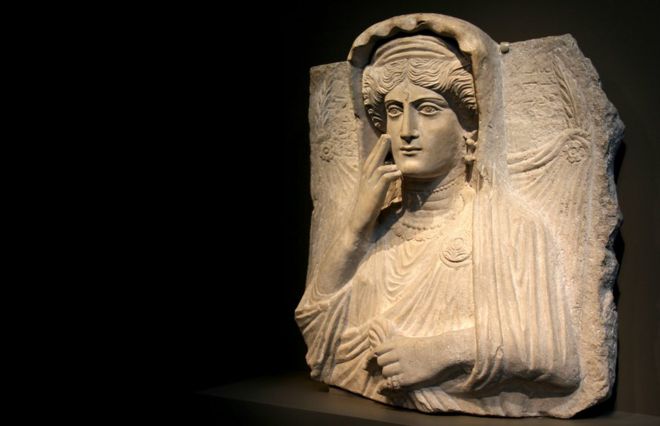
What do the ruins of an ancient Roman city in Syria and some of the most iconic buildings in Washington and London have to do with each other? A new exhibit aims to connect US audiences with antiquities under fire in Syria's civil war.
Once upon a time there was a beautiful girl named Haliphat. She was rich, but also modest and virtuous. She lived in a magnificent desert city that glowed pink when the sun set.
This could be the beginning of a fairy story - except the tale is true and right now there is no happy ending in sight.
Haliphat really did exist about 1,800 years ago. Her home was Palmyra, a vibrant commercial hub at the heart of the Roman Empire. Today its ancient ruins stand at the crosshairs of Syria's brutal civil war.
We know about Haliphat thanks to Charles Freer. He acquired her limestone bust in 1908 to and gave it to the Smithsonian's Freer and Sackler Galleries in Washington DC. The sculpture was taken from her tomb and shows her dressed in her finest clothes. According to an Aramaic inscription, she died in 231 AD.

The museum has decided to put the bust on display for the first time in almost a decade after the group calling itself Islamic State (IS) overran Palmyra in May.
"It's important that when something is in the news, people get a sense of its history," says museum director Julian Raby. "You've heard of Palmyra, but you may know nothing about it, so come and have a look at an object that allows you to reflect on current affairs."
He says Palmyra should have particular resonance with Americans because the ancient site has had a direct influence on US architecture, including buildings such as the Capitol, White House and Monticello, the Virginia home of President Thomas Jefferson.
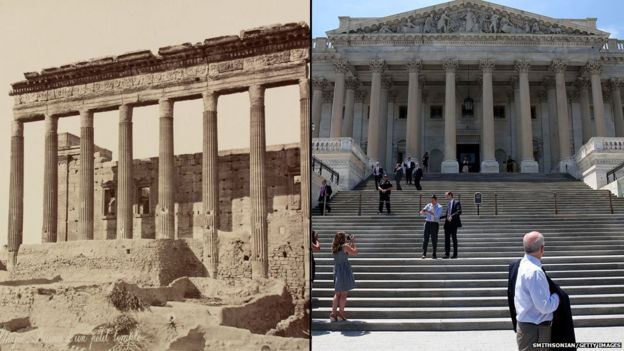
In the 18th Century, classical buildings and art were "rediscovered" by European travellers to the Palmyra region who brought back images of what they'd seen.
Accompanying the bust of Haliphat in the new exhibit are engravings of Palmyra by Robert Wood, who made the first detailed survey of the site and published his findings as The Ruins of Palmyra in 1753. Raby says the book was a prime inspiration for the neo-classical architectural style in Britain and North America.
"You couldn't have a more direct relationship," he says.
"We're trying to find ways for an American public to connect to this material and realize that it has been formative in the way the US looks and how it represents itself. Why was the White House and the Capitol built in a neo-classical style? It all starts at Palmyra."
In addition, he says, Wood's image of an eagle decorating an ancient Roman temple was the model for the Great Seal of the United States. Even a ceiling in the Freer Gallery itself takes its inspiration from the coffered ceilings of Palmyra.
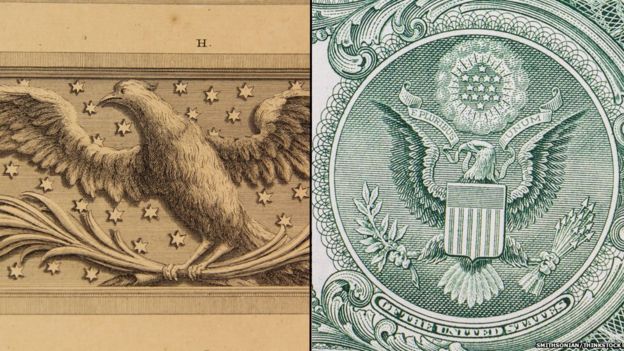
The museum is also displaying a video gallery of photos taken between 1867 and 1876 by Felix Bonfils that show how little the site has changed in the last couple of centuries.
But many experts fear Syria's war could destroy Palmyra, a Unesco World Heritage Site.
Earlier this month, IS published pictures that appeared to show artefacts from Palmyra being destroyed. The group said the statues had been seized from a smuggler. Islamic State reportedly makes millions of dollars selling artefacts looted from ancient sites in the Middle East.
But Katharyn Hanson, an expert on Middle East archaeology at the Penn Cultural Heritage Center in Philadelphia, says Syria's government forces may have caused worse damage.
"Palmyra has been at the front line of the conflict since the beginning and even before IS arrived the site was extensively damaged by the Assad troops," she says.
"The forces set up camp in the citadel at the top of the site in medieval castle ruins and shot down into the Roman ruins. There have been lots of reports of damage to the site and we can see it in satellite imagery."
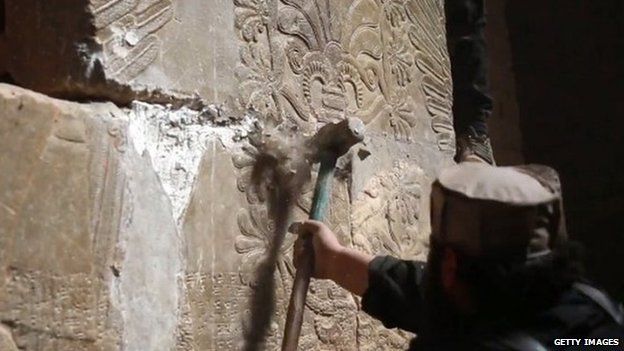
Imagery from March 2014 shows damage from earth works, trenches, defence fortifications, pockmarks from shelling and ground softening around areas where Roman columns have been used as protective barriers.
But she says there are no verified reports that Islamic State has damaged the site's ruins even though the group has destroyed some artefacts and carried out mass murder and executions at the Roman Theatre.
One video released by the group actually pledges to preserve the ruins, which are often seen as a symbol of Arab resistance to imperial forces.
Palmyra's rebel tribal queen Zenobia led a revolt against the Romans and by the end of 271 AD, she had conquered territory including Egypt and parts of modern-day Turkey.
Haliphat died 40 years before that conquest but her bust is nevertheless a reminder of an ancient civilization that had a profound influence on the modern world that is still visible in architecture today.
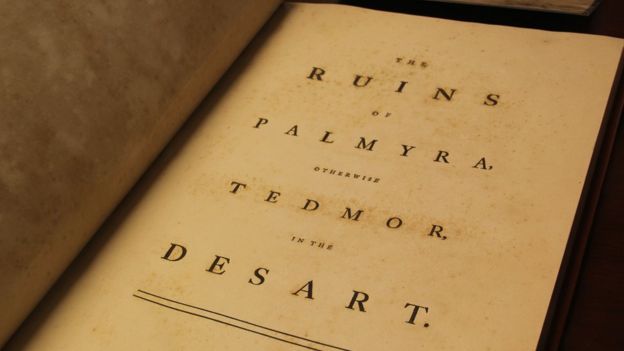

"It's so easy to think of Palmyra as deserted ruins and unpopulated. Do they really matter?" says Raby.
"But Haliphat gives us a humbling sense that a place like Palmyra was full of people we can relate to. Syria is one of the cradles of civilization and it's important that people get at least a tiny glimpse of that."
Magazine
Why my own father would have let IS kill me
- 23 July 2015
- Magazine
The climb that left me frozen with fear
- 22 July 2015
- Magazine
Why can't men be Olympic synchronised swimmers?
- 21 July 2015
- Magazine






No comments:
Post a Comment
Please leave a comment-- or suggestions, particularly of topics and places you'd like to see covered